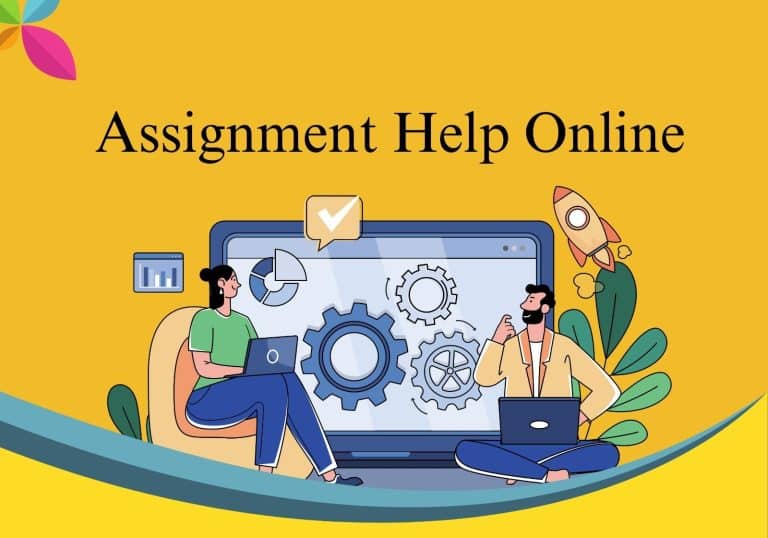Scholarly progress isn’t merely about studying harder—it’s about studying smarter. Perhaps one of the most underleveraged but extremely potent weapons in the arsenal of a student’s scholarly campaign is constructive feedback.
Whether it’s coming from lecturers, classmates, or online resources like assignment help services, feedback offers the mirror students need to reflect on their efforts, fine-tune approaches, and incrementally grow.
Within the UK education system, where independent learning and critical thinking are demanded, it is vital to know the function of feedback. Not merely a set of comments on an essay or some red ink over a maths question, good feedback has a key role in influencing performance, improving confidence, and assisting students to achieve their full academic potential.
What is Effective Feedback?
Feedback, by definition, is any information given about parts of one’s performance or comprehension. But not all feedback is helpful. Good feedback specifically means feedback that is:
- Timely – Provided shortly after the task has been done.
- Specific – About specific strengths and areas for development.
- Actionable – Gives explicit instructions on how to get better.
- Constructive – Given in a manner that motivates and not demotivates.
Good feedback makes students active learners of their own learning and not passive recipients of marks or grades.
Why Feedback is Important for Academic Growth
Academic development doesn’t occur overnight. It’s a process of learning, applying, assessing, and refining. Here’s how feedback directly aids that process:
1. Encourages Deeper Learning
Feedback invites students to see beyond the mark and ask themselves why they succeeded or failed. Through this process of reflection, there is greater cognitive investment, as learners internalise fundamental concepts and connect them in a meaningful way.
2. Promotes Self-Regulation
Students who get regular, constructive feedback learn to regulate their own learning. In the long term, they begin to ask themselves:
- What did I do well?
- Where did I get it wrong?
- How can I get it right next time?
This metacognitive approach builds essential skills for independent learning—something particularly useful when seeking assignment help or managing multiple deadlines.
3. Improves Confidence and Motivation
Knowing that someone has taken the time to provide thoughtful comments can significantly boost a student’s morale. Even negative feedback, if framed positively, can motivate learners to do better, especially when they see clear paths for improvement.
Types of Academic Feedback
Good feedback doesn’t always appear the same. Depending on the situation, it may appear in various forms: Written feedback is often requested when students ask for assignment assistance, especially in academic writing or research-based topics.
Verbal Feedback
Commonly provided in tutorials, one-to-one meetings, or even informally after class. Verbal feedback permits immediate explanation and discussion, making it more interactive and dynamic.
Peer Feedback
Peer evaluation promotes collaborative learning and subjects students to various points of view. If properly set up, peer feedback enables students to better grasp assessment criteria.
Automated Feedback
With the advent of e-learning platforms and AI-based tools, students are now receiving automated feedback—particularly for quizzes and coding assignments. While not as delicate, they provide instant feedback, which is useful for iterative learning.
Key Features of Quality Feedback
All feedback is not good for academic development. Here’s what makes the feedback work:
Clear and Brief Language
Steering clear of jargon and ambiguity ensures that the message is understood by students in a better manner.
Focus on the Task, Not the Person
It is good feedback that criticizes work, not the student. This maintains a professional, constructive tone.
Balanced Comments
The combination of praise and constructive criticism is essential. Negative comments alone can demotivate, while excessively flattering comments may hinder more substantial learning.
Goal-Oriented Advice
Feedback needs to be aligned with learning goals and include specific actions to improve.
Strategies for Using Feedback Effectively
Receiving feedback is half the battle; learning to apply it is where actual growth occurs. Here are some intelligent strategies to follow, especially when seeking assignment help to further understand and improve your work:
1. Read Feedback Carefully
It may be exciting to read comments or concentrate on the grade. Take time to comprehend each bit of feedback, particularly repeated feedback.
2. Ask for Clarification
If it is not understood, talk to the tutor or lecturer. Having a quick chat can clarify misunderstandings and make the advice easier to apply.
3. Feedback Log
Keep a plain notebook or electronic file where feedback is recorded. Include:
- Date
- Subject
- Most important comments
- Action points
This becomes an individual growth chart over time.
4. Carry Changes Forward in Future Assignments
Feedback isn’t only for that particular task—it must inform subsequent work as well. When requesting assignment assistance, communicate past feedback with tutors or support services to ensure the most effective use of the session.
How Teachers Can Facilitate the Use of Feedback
Although delivering feedback is critical, teachers have an important role in educating students about using feedback. Here’s how teaching staff can assist:
- Clarify the purpose of feedback from the start of a course.
- Demonstrate how to interpret feedback, using example assignments and feedback.
- Provide space for reflection, perhaps through revision exercises or peer review.
Facilitating discussion about feedback can create a culture of improvement in which students feel empowered rather than judged.
Common Barriers to Effective Feedback
Knowing what gets in the way of feedback can help steer clear of the obstacles. Here are a few common barriers: Vague Comments Comments such as “Needs improvement” without comment on how leave learners in a muddle.
Delays in Providing Feedback
In case it happens too late, learners are not able to utilize it for the following task.
Feedback Overload
Too many words can become burdensome. Students require priorised feedback addressing key areas.
Unaligned Feedback with Criteria
In case feedback doesn’t expressly tie back to the assessment criteria, it fails to be informative.
Digital Tools to Support Better Feedback
With increased numbers of courses utilizing blended and online learning, digital tools have become an integral component in the process of feedback. Various platforms students may be exposed to include:
- Turnitin Feedback Studio – Integrates originality reports with inline feedback.
- Google Docs – Facilitates real-time collaborative comment and suggestion.
- Moodle & Blackboard – Offer organized feedback forms and downloadable report.
- AI Writing Assistants – Helpful for grammar review and revision guidance, particularly when employing assignment help tools in drafting assistance.
Feedback and the Use of Assignment Help
On occasion, feedback points towards a need for additional support—particularly when students experience difficulties with academic writing, managing time, or interpreting marking criteria. Under such circumstances, recourse to assignment help can prove a sensible decision. Services that provide academic assistance can supplement feedback by:
- Explaining tricky concepts flagged in tutor comments
- Helping structure essays more effectively
- Providing editing or proofreading aligned with feedback
- Offering tips on citation, argumentation, or clarity
That said, it’s important to ensure any support used enhances independent learning rather than replacing it.
Building a Feedback-Responsive Mindset
To really benefit from feedback, students must adopt the right mindset. Here’s how to make it happen:
- What can be improved
- What feedback was received
- How it will be used next time
- This little habit will yield big rewards over time.
Conclusion
Good feedback isn’t a checkpoint—it’s a launchpad. Properly used, it can change the way students learn, enhance their academic performance, and prepare them for whatever comes next. In a high-pressure academic setting, particularly one where timelines are tight and standards are high, being able to act on feedback is what can push a student through.
Whether it is refining writing, making ideas clearer, or solidifying arguments, students who receive feedback are the ones who learn the most. For students wanting to optimize their progress, particularly when faced with challenging assignments, tools such as Assignment in Need (assignnmentinneed.com) can offer specific assignment assistance that is in line with individual feedback and educational objectives.
So the next time feedback arrives in the inbox or scribbles across a page, don’t dismiss it—use it. It could be the key to academic success just around the corner.











